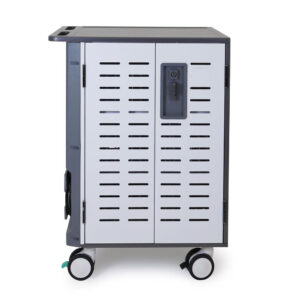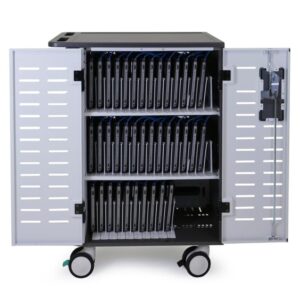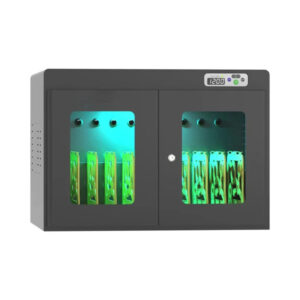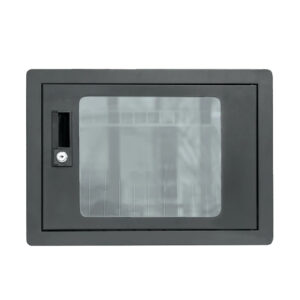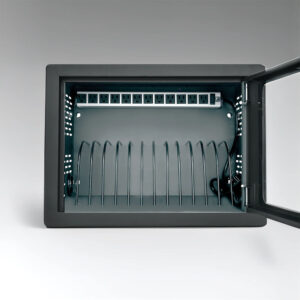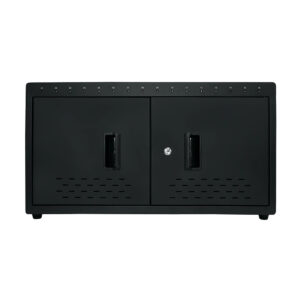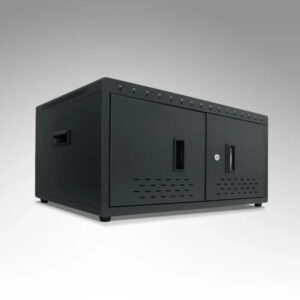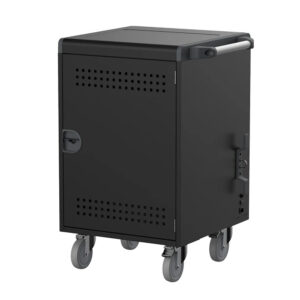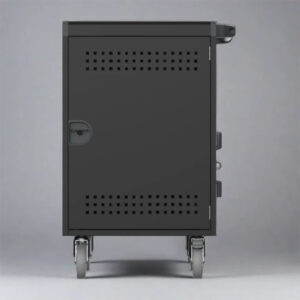Summary
Charging cabinets are specialized storage units designed to provide safe and efficient charging for electronic devices and electric vehicles (EVs). As the demand for accessible power solutions grows in various settings—such as educational institutions, workplaces, and public areas—charging cabinets have become increasingly prevalent. However, these cabinets can face a range of common problems that affect their performance and user experience. Identifying these issues is crucial for ensuring reliable operation and maintaining user satisfaction.
The most notable technical failures in EV charging stations stem from communication issues between the vehicle and charger, as well as problems with plug locking mechanisms. Research indicates that approximately 47.1% of charging failures are attributed to communication errors from the vehicle’s software, while 44.1% arise from locking malfunctions related to faulty connectors or user errors. Meanwhile, usability challenges, including complex interfaces and cluttered designs, can frustrate users, leading to operational difficulties.
Common issues reported by users of charging cabinets include connector sticking, slow or failing charges, frequent circuit breaker trips, overheating, and outdated firmware. These problems can hinder the charging process and pose safety risks, emphasizing the importance of regular maintenance and timely software updates. Additionally, establishing preventive measures, such as routine inspections and the implementation of protective technologies, can significantly reduce the likelihood of such issues arising and enhance overall system reliability.
Overall, understanding the common problems associated with charging cabinets and their solutions is vital for users and operators alike. By recognizing these challenges and implementing effective troubleshooting steps, users can enhance their experience and minimize potential downtime, contributing to the continued success and usability of charging infrastructure in various contexts.
Table of Contents
Common Problems
Charging cabinets, whether for electric vehicles (EVs) or electronic devices, can encounter a variety of issues that affect their usability and functionality. Understanding these common problems and their causes can help users troubleshoot effectively.
Technical Failures in EV Charging Stations
Technical failures are prevalent in EV charging stations, often stemming from two main causes: EV communication issues and plug locking mechanism problems. Data shows that approximately 47.1% of failures are due to communication issues originating from the vehicle’s software, while 44.1% relate to locking issues that may arise from faulty connectors or improper user connections. Charger-related problems account for only about 5% of failures, indicating that most issues are rooted in vehicle interaction rather than the charging station itself.
Usability Problems
Usability problems can significantly impact the user experience with charging cabinets. Complex navigation within user interfaces can frustrate users, making it difficult to find necessary functions or information. Additionally, a cluttered design may hinder efficient task completion, leading to user dissatisfaction and increased operational difficulties.
Common Charging Issues
Users frequently report several specific issues when using charging cabinets.
Connector Sticking: A stuck connector can prevent proper charging initiation, requiring manual intervention or reference to the user manual for emergency release procedures.
Slow or Failing Charges: Users may experience slow charging speeds or the charger failing to start altogether. This can be attributed to various factors, including power delivery negotiation failures between devices and chargers.
Circuit Breaker Trips: Frequent tripping of circuit breakers is common, particularly when using a 120-volt outlet. This issue may require adjustments in vehicle settings or connections to ensure compatibility and safety.
Overheating: High temperatures during operation can lead to overheating issues, posing safety risks. Regular maintenance and the installation of thermal management systems are recommended to mitigate this risk.
Outdated Firmware: Charging stations may suffer from performance issues due to outdated firmware, which can lead to slow charging speeds or complete system failures. Users are encouraged to keep their software updated to ensure optimal functionality.
By recognizing these common problems, users can take proactive measures to enhance their experience with charging cabinets and minimize potential downtime.

Troubleshooting Steps
When encountering issues with charging cabinets, following a systematic approach can help identify and resolve problems effectively.
Initial Checks
Check if the Charger has Power: Ensure that the charging cabinet is plugged in and receiving power. Inspect the circuit breaker panel for any tripped breakers or power supply issues from the grid.
Inspect Connectors and Wiring: Look for signs of wear and tear, such as damaged connectors or loose wiring. Regular visual and functional assessments are essential for safe operation.
Monitor Power Supply: Verify that the charging station receives a consistent power supply. Check for voltage fluctuations, power surges, or circuit overloads that could damage internal components.
Restarting and Resetting
Self-Check and Maintenance
Conduct Self-Checks: Some charging cabinets come with built-in self-diagnostic features. Use these tools to run a check on the system’s functionality, ensuring that all components are operating correctly.
Keep Software Updated: Regularly check for firmware updates to ensure the charging cabinet remains compatible with newer electric vehicles and operates efficiently. Outdated firmware can lead to slow charging speeds or system shutdowns.
Escalation

Future Prevention
To prevent future issues, consider implementing a charging manager that oversees the performance and maintenance of the charging cabinets, ensuring timely updates and inspections are conducted. Regular maintenance practices, such as cleaning equipment and conducting thorough inspections, can greatly enhance the longevity and reliability of charging cabinets.
Preventive Measures
To ensure the optimal performance and longevity of electric vehicle (EV) charging cabinets, implementing preventive measures is crucial. This involves regular maintenance, inspections, and the use of advanced protective technologies.
Regular Maintenance Practices
Establishing a routine maintenance schedule is essential for proactive management of EV charging stations. This includes regular cleaning of charging equipment to remove dust, dirt, and debris that can hinder functionality. Using a damp cloth for the unit’s body and a dry one for connectors is recommended to avoid damage from harsh chemicals. Regular inspections should check for signs of wear and tear, such as damaged connectors, loose wiring, or worn-out components, which can lead to significant operational issues if neglected.
Utilization of Protective Technologies
Littelfuse offers a comprehensive range of protective devices that enhance user safety and the operational reliability of charging stations. These include arc-fault circuit interrupters (AFCIs) and surge protection devices (SPDs) that mitigate risks associated with electrical faults. Ground-fault detection is particularly vital as it identifies unintended electrical paths that could pose electric shock hazards. Furthermore, advanced fault detection sensors monitor the system in real time, allowing for immediate response to issues like arc and ground faults, especially in high-power DC fast charging environments.
Software and Firmware Updates
Keeping the software and firmware of EV charging stations up to date is crucial for maintaining seamless functionality and compatibility with new EV models. Regular updates can help prevent security vulnerabilities and operational disruptions caused by outdated systems. Additionally, addressing bugs through software updates enhances the overall user experience and charging efficiency.
Compliance with Safety Regulations
Ensuring compliance with local, state, and federal regulations is essential for the lawful operation of charging stations. This includes adhering to safety and accessibility standards set forth by various governing bodies, which helps to maintain public trust and operational integrity.
By following these preventive measures, operators can significantly reduce the likelihood of charging issues and ensure that their EV charging infrastructure remains reliable and safe for users.

Case Studies and Examples
Overview of Charging Cabinets
The implementation of charging cabinets in various environments has highlighted both the challenges and successful strategies for overcoming common issues. Charging cabinets are increasingly utilized in educational settings, businesses, and public spaces to provide safe and organized charging solutions for electronic devices. As technology integration continues to rise, these cabinets play a crucial role in managing the growing demand for accessible charging solutions.
Successful Implementations
Educational Institutions
In schools, charging cabinets have proven effective in protecting technological investments and maintaining organization. For instance, a notable case involved a school utilizing the Lyte charging cabinet from LapCabby, which was praised by IT Technician D. Wilson for its ability to safeguard devices and adapt to the evolving needs of the educational environment. This case exemplifies how the right charging solution can enhance technology use while ensuring security and ease of access.
Business Applications
In a corporate setting, charging cabinets have been deployed to streamline device management and ensure that employees have the necessary access to power. A case study indicated that businesses that opted for scalable charging solutions, which could accommodate future growth and device additions, were able to enhance overall efficiency and user satisfaction. This approach not only addressed immediate needs but also anticipated future demands, reducing the need for frequent upgrades.
Challenges Encountered
Despite the successes, several common issues have arisen with charging cabinets. One significant problem reported is the inability of some cabinets to accommodate a growing number of devices or to integrate advanced security features. In response, organizations have begun to prioritize selecting cabinets that offer modular designs, enabling scalability without sacrificing safety.
Lessons Learned
The key takeaway from these case studies is the importance of user-centered design and the continuous evaluation of charging solutions. Organizations that engaged in iterative design processes, where feedback from users was regularly incorporated, found greater success in implementing effective charging systems. This iterative approach allowed for adjustments based on real-world usage, ensuring that the final solutions met user needs and business objectives.



